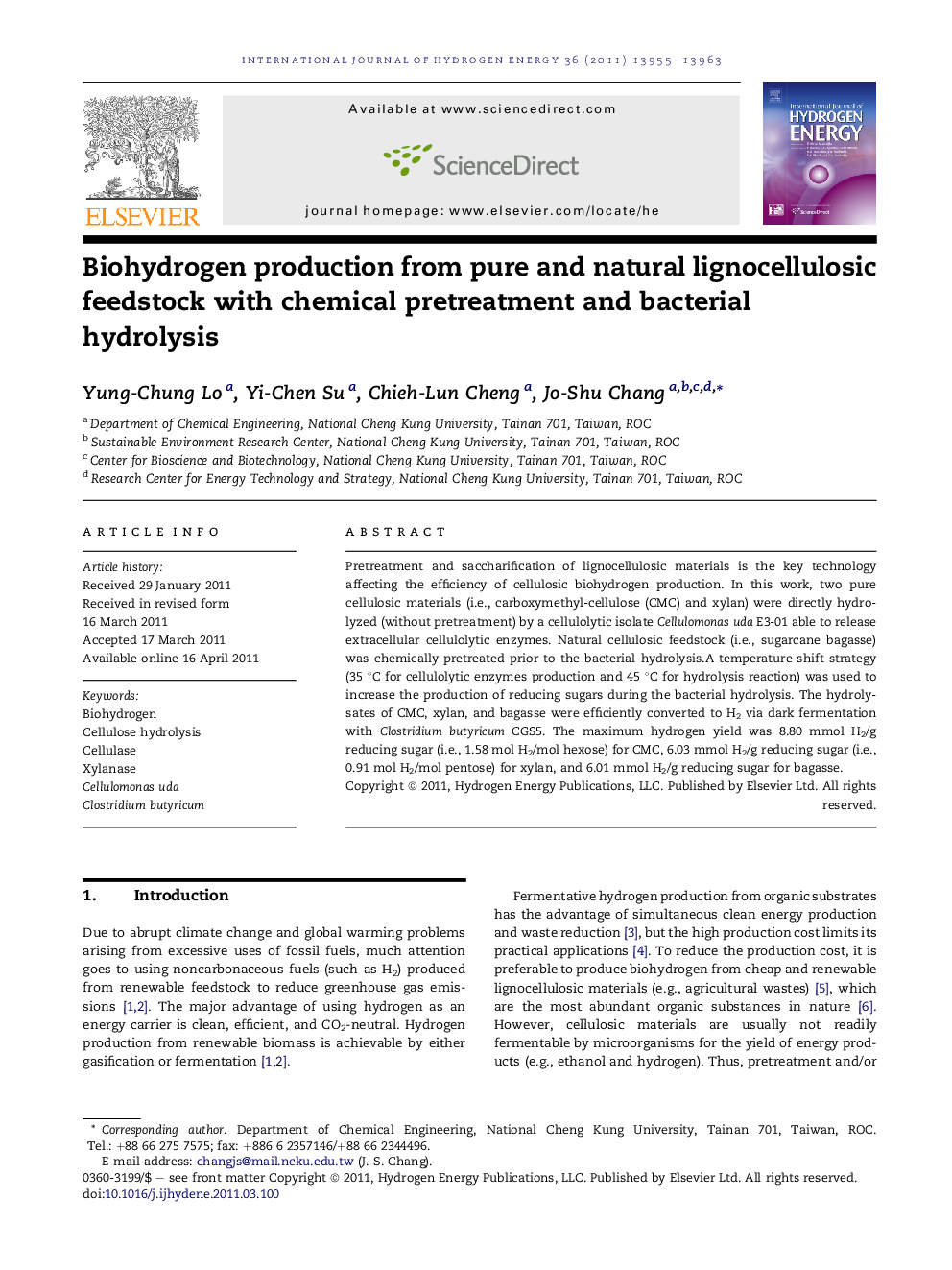| Article ID | Journal | Published Year | Pages | File Type |
|---|---|---|---|---|
| 1278749 | International Journal of Hydrogen Energy | 2011 | 9 Pages |
Pretreatment and saccharification of lignocellulosic materials is the key technology affecting the efficiency of cellulosic biohydrogen production. In this work, two pure cellulosic materials (i.e., carboxymethyl-cellulose (CMC) and xylan) were directly hydrolyzed (without pretreatment) by a cellulolytic isolate Cellulomonas uda E3-01 able to release extracellular cellulolytic enzymes. Natural cellulosic feedstock (i.e., sugarcane bagasse) was chemically pretreated prior to the bacterial hydrolysis.A temperature-shift strategy (35 °C for cellulolytic enzymes production and 45 °C for hydrolysis reaction) was used to increase the production of reducing sugars during the bacterial hydrolysis. The hydrolysates of CMC, xylan, and bagasse were efficiently converted to H2 via dark fermentation with Clostridium butyricum CGS5. The maximum hydrogen yield was 8.80 mmol H2/g reducing sugar (i.e., 1.58 mol H2/mol hexose) for CMC, 6.03 mmol H2/g reducing sugar (i.e., 0.91 mol H2/mol pentose) for xylan, and 6.01 mmol H2/g reducing sugar for bagasse.
